Importance of the use of liver protectors in the production output of broilers
Importance of the use of liver protectors in the production output of broilers
By: Sandra Olivera and Alfred Blanch.
The liver is the organ performing the largest number of vital functions indispensable for the animal organism, most notably three that are especially relevant:
- Detoxification: It acts as a filter that processes and eliminates toxins from waste produced by the metabolism itself, toxins and harmful chemicals from the environment and microorganisms that eliminated by Kupffer cells.
- Synthesis: It plays a highly important role in the digestion process and the metabolising of nutrients (carbohydrates, lipids and proteins) from the stimulation of bile acid synthesis.
- Storage: It is the main organ for storing energy from the organism, thanks to the high levels of glycogen (source of carbohydrates) and fat-soluble vitamins (A, D, E, K) that can be stored.
For all that, the liver plays a key role as the centre of a set of metabolic and productive activities, and its level of activity will be directly proportional to the level at which the metabolism works. This means that, during the animal’s growth in intensive production systems, the liver is potentially exposed to sustaining the damage caused by a wide variety of harmful substances, deriving from both the different metabolic processes (e.g. reactive oxygen species), and other external ones external to the organism itself (xenobiotic).2,3 As a result, under these conditions, the liver activity can be a limiting productivity factor. In this regard, the use of a hepatoprotective additive will prevent this activity from diminishing, significantly improving yield.
Under these premises, there are two basic goals for using a hepatoprotective additive in the animals’ diet:
- Improving the integrity and regeneration of hepatocytes, optimising the liver’s ability to detoxify, enabling it to better counteract the harmful effects of mycotoxins, heavy metals, pesticides, antibiotics and other substances, as promoters of chemical growth, on the animals’ health and on their yield.
- Favouring liver synthesis by stimulating the activity of digestive enzymes that ensure optimum use of nutrients: carbohydrates, proteins, fats and fat-soluble vitamins, enhancing its intestinal absorption and, hence, their bioavailability.
Types of hepatoprotective additives commercially available
Liver protectors act by protecting liver from toxins and stimulating its functions, which leads to improved animal health, growth and production.
There are two different types available in the market:
- Herbal origin: made up of a combination of a variable number of herbs with different hepatoprotective properties, such as Phyllantus niruri, Azadirachta indica, Andrographis paniculata, Achyrantes aspera, etc.
- Donors of methyl groups: based on the methyl groups’ ability to connect to toxins, favouring their elimination from the animal.10 Compounds able to donate methyl groups most notably include certain amino acids and their derivatives (e.g. methionine, carnitine, betaine, etc.), vitamin derivatives (e.g. choline).
Both can come in liquid or powder form. Liquid liver protectors are added to drinking water and are generally used for healing purposes, as the poultry affected by liver problems normally significantly reduce their feed intake, while that is not the case with liquids. For other situations, when used for preventive purposes, powdered liquid protectors are the most commonly used, as they provide greater yield.
Using a multi-herb blend as a liver protector
The effectiveness of a blend of four herbs with different hepatoprotective properties was evaluated; Phyllantus niruri, Azadirachta indica, Andrographis paniculata and Achyrantes aspera in 180 Ross roosters from a commercial farm which, at 20 days, were shipped to a specific unit, where they were subjected to different feeding programmes.
The 180 animals were divided into 6 repetitions of 3 groups of 10 animals each:
- Group A (positive control): these were fed a normal diet.
- Group A (negative control): these were fed a normal diet supplemented with 10% oxidised soya oil and 0.5% ferrous sulphate.
- Group C: same diet as Group B, but supplemented with 250 g of a multi-herb blend per tonne of feed.
During the recovery phase (days 32 to 42), Groups A and B were fed a normal diet, while Group C was given a normal diet supplemented with 250 g of a multi-herb blend per tonne of feed.
The study was conducted during the second growth period, spanning days 20 to 42. The chickens were weighed individually on days 20, 31 and 42, and their mortality was recorded daily. The feed intake and feed conversion ratio were measured on days 31 and 42. Blood tests and autopsies were also conducted (liver weight) on day 42 (Table 1). At the end of the study, blood samples were taken in order to evaluate differences between treatments regarding two serum markers of liver inflammation; Aspartate transaminase (AST) and Alkaline phosphatase (ALP). For the statistical study, an alpha risk of 5% was chosen.
As shown in the results collected in Table 1, the addition of oxidised soya oil and high levels of ferrous sulphate in feed slightly, though not significantly, lowered growth yield. Supplementing with 250 g of multi-herb blend per tonne of feed significantly improved feed conversion and body weight during the intoxication stage (days 20 to 31), which could indicate that this multi-herb blend allowed the liver to use the oxidised soya oil as a source of energy.
Conclusion
Optimisation in the use of feedstuffs and the increase in productivity are two of the most important aspects in the poultry industry. Due to the liver’s importance in digestion, absorption and metabolising of nutrients, the use of liver protectors that stimulate its ability to eliminate harmful substances, such as mycotoxins, heavy metals, pesticides, etc., and which allow the transportation and suitable use of nutrients to ensure an adequate valuation of the diet, will entail an improvement in the feed conversion ratio, in the efficiency of the development and in the production performance, while contributing toward maximising return on investment in the feed.
References
1. Meyer S, Kulkarni A. Hepatotoxicity. In: Introduction to Biochemical Toxicology. New York: John Wiley and Sons; 2001.
2. Halliwell B. Reactive oxygen species and the central nervous system. J Neurochem. 1992;59:1609–23.
3. Halliwell B, Gutteridge J. Free Radicals in Biology and Medicine. Oxidative stress: Adaptation, damage, repair and death. 3rd ed UK Oxford Univ Press. 1999:246–350.
4. Cubero FJ, Nieto N. Kupffer cells and alcoholic liver disease. Rev esp enferm. 2006;98:460-472.
5. Sharon A. Overview of Hepatic Disease in Small Animals. MSD Man Merck Co, Inc, USA. 2016.
6. Trivedi N, Rawal U. Hepatoprotective and antioxidant property of Andrographis paniculata (Nees) in BHC induced liver damage in mice. Indian J Exp Biol. 2001;39(1):41-46.
7. Manjrekar A, Jisha V, Bag P, et al. Effect of P.niruri treatment on liver, kidney and testes in CLl4 induced hepatotoxic rats. Indian J Exp Biol. 2008;46(7):514-520.
8. Mageswari B, Latha P, Rukkumani R. Effect of phyllanthus niruri on alcohol and polyunsaturated fatty acid induced oxidative stress in liver. Int J Pharm Pharm Sci. 2010;2(4):5862.
9. Akbar S. Andrographis paniculata: a review of pharmacological activities and clinical effects. Altern Med Rev. 2011;16(1):66-77.
10. Obeid R. The Metabolic Burden of Methyl Donor Deficiency with Focus on the Betaine Homocysteine Methyltransferase Pathway. Nutrients. 2013;5(9):3481–3495.
11. McBreairty L, Robinson J, Harding S, Randell E, Brunton J, Bertolo R. Betaine is as effective as folate at re-synthesising methionine for protein synthesis during moderate methionine deficiency in piglets. Eur J Nutr. 2016;55(8):2423-2430.
12. Hayat Z, Rehman A, Akram K, Farooq U, Saleem G. Evaluation of a natural methionine source on broiler growth performance. J Sci Food Agric. 2015;95(12):2462-6.
Read more at
Nuproxa's Blog
Nuproxa Mexico signs strategic alliance with Innovad and Herbonis
The alliance will add to the Mexican portfolio products such as Panbonis®, a natural and bioactive ...
+Nuproxa Group Appoints Dr. Goetz Gotterbarm as CEO, Making a New Era of Leadership
Etoy, Switzerland January 2024 – Nuproxa Group, a leading player in natural animal nutrition a...
+Nuproxa launches new Mission and Vision focused on innovation, nutrition and animal welfare
Etoy, August 2023 – Nuproxa, a pioneer in providing natural solutions for animal health and nu...
+What is a Feed Safety Quality Management System?
Feed Safety Quality Management System (FSQMS) is a program expressly set up by manufacturers to ensu...
+Read more at
Nuproxa's Blog
Nuproxa Mexico signs strategic alliance with Innovad and Herbonis
The alliance will add to the Mexican portfolio products such as Panbonis®, a natural and bioactive ...
+Nuproxa Group Appoints Dr. Goetz Gotterbarm as CEO, Making a New Era of Leadership
Etoy, Switzerland January 2024 – Nuproxa Group, a leading player in natural animal nutrition a...
+Nuproxa launches new Mission and Vision focused on innovation, nutrition and animal welfare
Etoy, August 2023 – Nuproxa, a pioneer in providing natural solutions for animal health and nu...
+What is a Feed Safety Quality Management System?
Feed Safety Quality Management System (FSQMS) is a program expressly set up by manufacturers to ensu...
+Natural Polyherbal Sources for Supplementing Vitamin e in Animal Nutrition
Nearly 100 years after its discovery in 1922, is practically consensual that supplementing with Vita...
+Improving production efficiency by controlling protozoa via herbal blend
The continuous improvement of production efficiency in industrial poultry farming still remains an e...
+Importance of the use of liver protectors in the production output of broilers
The liver is the organ performing the largest number of vital functions indispensable for the animal
+Importance of the use of liver protectors in the production output of broilers
The liver is the organ performing the largest number of vital functions indispensable for the animal...
+Dorsal fat reduction in pigs: nature has the solution
Pig farming is constantly changing. Since its technification in the 1970s, new knowledge and technol...
+Efficient solutions and better results
Pig farming is constantly changing. Since its technification in the 1970s, new knowledge and technol...
+Natural Polyherbal Sources for Supplementing Vitamin e in Animal Nutrition
Nearly 100 years after its discovery in 1922, is practically consensual that supplementing with Vita...
+Herbal formula, source of choline and it’s effect on the apparent metabolisable energy of broiler chicken’s diets
In relation to the effect of different sources of choline on the chicken’s performance, papers wri...
+
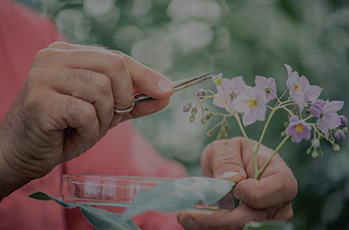
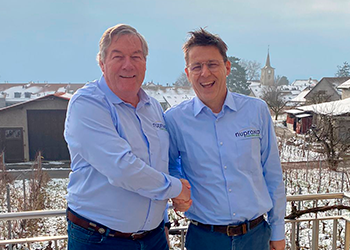


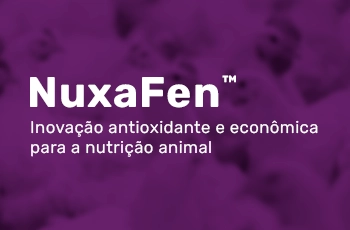
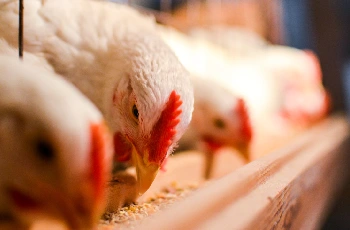
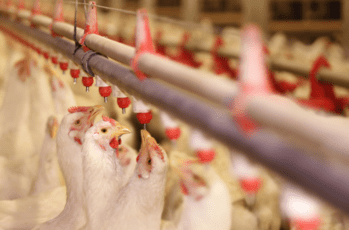
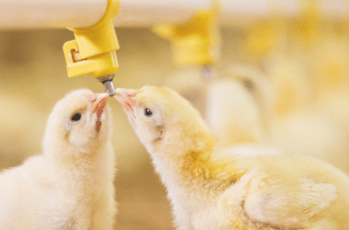
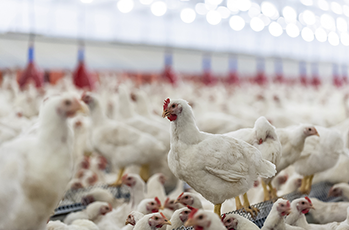
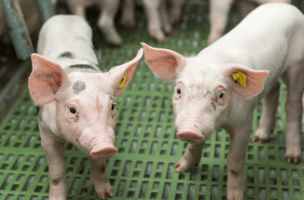
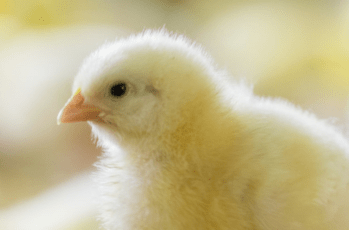
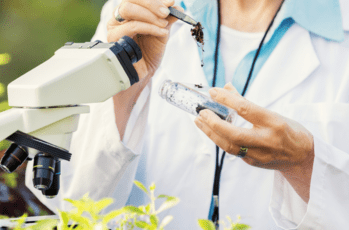
receive our newsletters.